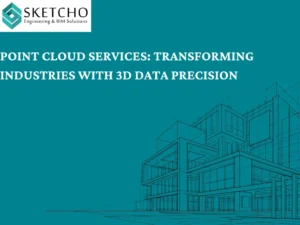In the world of digital design, cloud 3D modeling is rapidly transforming industries by offering a more efficient, collaborative, and scalable approach to creating three-dimensional models. Whether for architecture, product design, animation, or gaming, cloud 3D modeling is redefining how professionals interact with design tools. By leveraging the power of cloud computing, designers and engineers can now access robust modeling software without requiring high-end hardware. In this blog, we will explore the advantages, challenges, and future trends of cloud 3D modeling and how it is revolutionizing various industries.
What is Cloud 3D Modeling?
Cloud 3D modeling is a process where 3D models are created, edited, and stored on cloud-based platforms rather than on local computers. This approach eliminates the need for expensive hardware and allows users to access their projects from anywhere with an internet connection. Unlike traditional 3D modeling software that requires significant computing power, cloud 3D modeling enables designers to perform complex tasks using web-based applications powered by cloud servers.
Advantages of Cloud 3D Modeling
- Accessibility and Remote Collaboration
One of the key benefits of cloud 3D modeling is the ability to access models from anywhere. Since the software runs on cloud-based servers, users can log in and work on their projects from multiple devices, including laptops, tablets, or even mobile phones.
Additionally, cloud 3D modeling fosters seamless collaboration among teams. Designers, engineers, and clients can work on the same model in real time, making revisions instantly visible to all stakeholders. This feature is especially beneficial for global teams that need a centralized workspace for collaboration.
- Reduced Hardware Costs
Traditional 3D modeling requires high-performance computers equipped with powerful processors and dedicated GPUs. Cloud 3D modeling eliminates this requirement by offloading the computing workload to cloud servers. As a result, users can achieve the same level of performance without investing in expensive hardware, making it a cost-effective solution for individuals and businesses alike.
- Scalability and Storage
With cloud 3D modeling, users no longer need to worry about storage limitations. Cloud platforms provide scalable storage options that allow designers to save and manage large 3D files without running out of space. Additionally, cloud 3D modeling solutions can easily scale up resources when handling complex models, ensuring smooth performance without lag or crashes.
- Automatic Updates and Maintenance
Another major advantage of cloud 3D modeling is automatic software updates. Unlike traditional software that requires manual installation of updates and patches, cloud 3D modeling platforms automatically update to the latest versions. This ensures users always have access to the newest features and security enhancements without disrupting their workflow.
- Security and Data Backup
Data security is a critical concern for designers and businesses. Cloud 3D modeling platforms often provide robust security measures, including encrypted data storage, regular backups, and access control settings. This minimizes the risk of data loss and ensures that critical design files remain safe even in case of hardware failure or cyber threats.
Challenges of Cloud 3D Modeling
Despite its numerous benefits, cloud 3D modeling comes with some challenges that users must consider.
- Internet Dependency
Since cloud 3D modeling relies on internet connectivity, any disruptions can hinder productivity. Users in regions with unstable internet connections may face difficulties accessing and editing their models in real time.
- Learning Curve
Switching from traditional 3D modeling software to cloud 3D modeling may require some learning and adaptation. Designers accustomed to desktop-based tools might need time to familiarize themselves with web-based interfaces and workflows.
- Subscription Costs
Most cloud 3D modeling platforms operate on a subscription-based model. While this eliminates the need for upfront hardware costs, businesses must budget for ongoing software expenses. However, for many users, the scalability and accessibility benefits outweigh the subscription fees.

Industries Benefiting from Cloud 3D Modeling
- Architecture and Construction
Architects and construction professionals rely on cloud 3D modeling to create detailed building models and visualize designs before construction begins. The ability to collaborate remotely allows teams to make real-time adjustments, reducing errors and improving project efficiency.
- Product Design and Manufacturing
Product designers leverage cloud 3D modeling to develop prototypes, test designs, and optimize manufacturing processes. The ability to store and share 3D models in the cloud facilitates communication between designers, engineers, and manufacturers, streamlining product development.
- Gaming and Animation
The gaming and animation industries benefit immensely from cloud 3D modeling, as it allows developers to create high-quality assets without being restricted by hardware limitations. Game designers can work on character models, environments, and animations collaboratively, leading to more efficient production workflows.
- Healthcare and Medical Imaging
In the healthcare sector, cloud 3D modeling is used for medical imaging, prosthetic design, and surgical simulations. The ability to create and share 3D medical models enhances patient care and medical research, enabling healthcare professionals to make informed decisions.
Future Trends in Cloud 3D Modeling
As technology continues to evolve, cloud 3D modeling is expected to see significant advancements in the coming years.
- Integration with AI and Machine Learning
The integration of AI and machine learning with cloud 3D modeling will enhance automation and predictive modeling. AI-driven tools can assist designers in generating realistic models, optimizing designs, and reducing repetitive tasks.
- Virtual and Augmented Reality (VR/AR)
Cloud 3D modeling is poised to integrate with VR and AR technologies, allowing designers to interact with 3D models in immersive environments. This will enhance design visualization and make it easier to showcase projects to clients.
- Blockchain for Security and Ownership
Blockchain technology could play a role in securing cloud 3D modeling projects by ensuring authenticity, ownership, and data integrity. This can be particularly beneficial for intellectual property protection and secure collaboration.
Conclusion
The rise of cloud 3D modeling is transforming the way designers and engineers create, store, and collaborate on 3D models. With its accessibility, scalability, and cost-saving benefits, cloud 3D modeling is becoming an essential tool across various industries. Although challenges such as internet dependency and subscription costs exist, the advantages far outweigh the drawbacks.
As the technology advances, cloud 3D modeling will continue to push the boundaries of digital design, making it an indispensable asset for professionals worldwide. Whether you are an architect, game developer, product designer, or healthcare professional, embracing cloud 3D modeling will undoubtedly enhance your workflow and open up new possibilities for innovation.





